- Contact usFR +33 450 872 109 US/CA +1 (646) 233-1354
- - Newsletter
- - Follow us





-

Home > Articles and tour tips > Cycling tips > Biking Tours With Families
11-03-2025
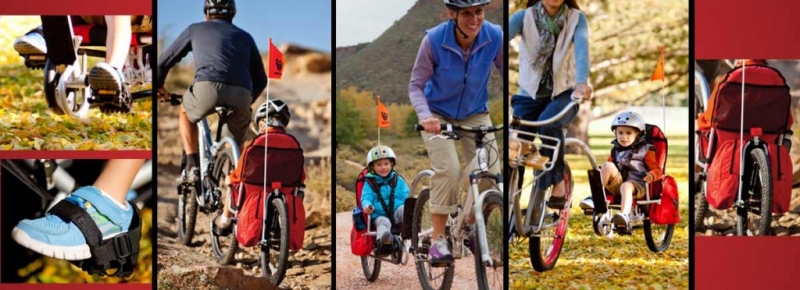
Cycling tours are a great way for families to explore a new region or country. From your bicycle seat, you'll get to know a place–with its own history, culture, sights, and smells – in a way that isn't necessarily possible when traveling by car or train. It's an ever-changing adventure, full of new and exciting experiences that will feed your entire family's sense of exploration. Plus, the physical demands of a bike tour mean that parents won't have to deal with hyper kids at night!
.jpg?1554212643372)
As all parents know, traveling with children means that there are additional factors to consider when planning your vacation:
SAFETY: This is probably your top concern when selecting a tour, and rightly so. Depending on your child's riding skills, you may favor biking on traffic-free bikeways, quiet secondary roads, roads with bike lanes, and avoiding trips that involve riding across busy towns. Although some color-coded maps can help you assess road traffic in advance, it's always a good idea to ask locals for their advice and input when choosing your route.
MILEAGE: Another key factor to consider is how far your child can ride in a day. How fit is your child? Can he/she comfortably cover 30 miles (48km) day after day, over rolling terrain? Or is 20 miles (32km) the limit? These questions are important to consider, as your dream tour could quickly turn into a nightmare if you've overestimated your child's fitness level. From our experience, children below the age of 9 or 10 with their own bikes can comfortably cover a maximum of 20 miles (32km) a day. While we recommend that children 14-15 years old do “level 2 and 3” trips, an athletic 12-year-old could complete this tour level as well.
DIFFICULTY: While mileage is important, it often doesn't tell the whole story. Biking 10 miles (6km) on flat roads is hugely different from pedaling just 5 miles (8km) on steep and hilly terrain! With terrain being a major aspect of a tour, be sure to review the altitude profiles that come with most trip descriptions. Keep in mind too that a 6 mile (10km) gentle slope can turn into a challenging pass when you have a 2-seater trailer in tow! Fast downhills should be avoided regardless of the equipment you've chosen for your family (extension bikes, trailers, or regular bikes), as the extra weight can speed things up considerably.
To help riders understand the difficulty levels of our tours, we've created a 1-to-5 scale (1=easy and 5=very strenuous), shown below:
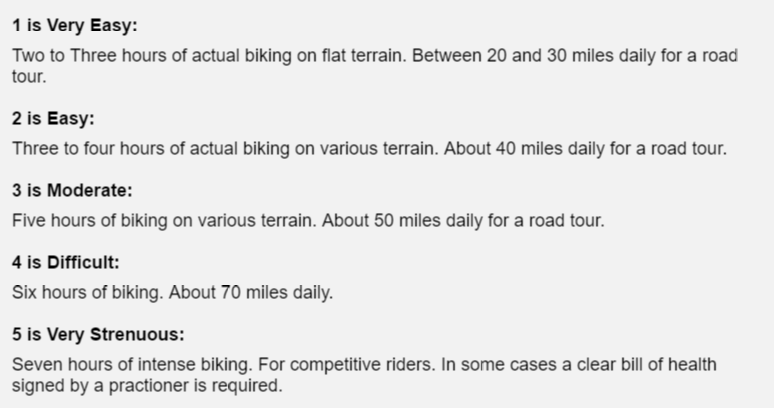
Cyclomundo offers several tours that are ideal for families with children, including "Boat and Bike: Island Hopping in Brittany" and "Railways, Bikeways and Greenways" in Catalonia. You can find more details on our family-friendly tours on our blog and our website (levels 1 and 2 tours).
EQUIPMENT: As the ideal equipment is not available everywhere, this may be a limiting factor when choosing a tour. Here are some examples of the equipment one should consider when traveling with kids:
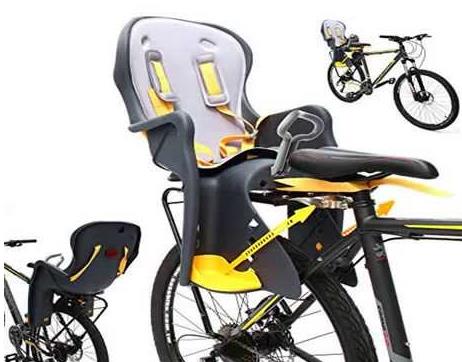
It is critical that your baby seat (rear or front-mounted) include footrests and straps to hold and shield your child's feet so they don't get caught in the wheel or brake. Make sure all laces and loose clothing that could become trapped in the spokes are well-tied and tucked away, well out of reach of your tires. There should also be straps that secure your child's shoulders and waist.
Baby seats attach to your bike in various ways depending on whether they are front-mounted or rear-mounted. Keep in mind when attaching a front-mounted baby seat that it will take up approximately 10 inches (25cm) of space between the stem and saddle of the bike. If your top tube (the distance between your handlebars and seat tube) is less than 20 inches (51cm), you may have difficulty riding with a front-mounted seat. The majority of rear-mounted seats on the market mount to a bike rack. Once the bike rack is mounted on your bike, the seat clips right in.
The main difference you will notice when pulling a bike trailer is the increased weight. Handling is not greatly affected, as the trailer's load is equally distributed between its two wheels and the hitch arm, allowing the trailer to be kept level as the bicycle moves and turns. While bike trailers can be used with hybrid, mountain, and even road bikes, they are best used with hybrid bikes, as the hybrid's frame is better suited to towing the extra weight. In addition, the lower gearing in a hybrid bike allows you to pull your precious cargo more comfortably.
Bike trailers attach to bikes in many different ways. Some attach via the axle mount, clamping directly to the rear wheel of your bike and may require a longer axle on your rear wheel, while other trailers may attach through a seat stay mount, clamping directly to the non-drive side rear triangle of your bike. Some even attach to your bike using a quick release clamp and shims that go around your seat post mount. Though this is a convenient and easy attachment, this type of mount is less stable as there is a higher center of gravity. Depending on the type of trailer you're using, you may need some tools in order to attach/remove the trailer. Many use an adjustable wrench and/or Allen wrenches. Bikes with a quick release axle on the rear wheel will most likely not need the adjustable wrench.
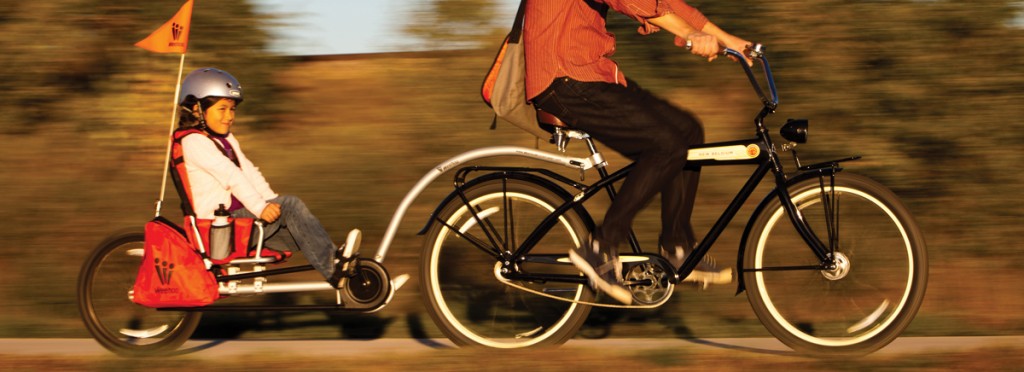
Extension bikes are best used with hybrid bikes. They attach easily by clamping onto the seat post or by attaching a rack to a fixed bike. You may wobble a bit at first when using an extension bike, but you will soon adapt and your cyclist-in-training will learn important balancing lessons!
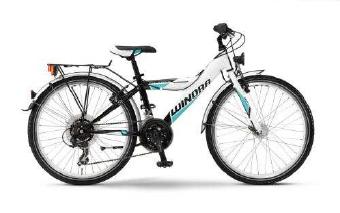
Note that bike trailers and extension bikes are not ideal for all terrain, such as unpaved or uneven roads. They can also be cumbersome if the tour requires transfers. Be sure to consult route logistics (mileage, difficulty) when selecting your equipment.
HOTELS AND ACCOMMODATIONS: Once you've settled on a route and equipment for your tour, another question emerges: Where will you stay? Many tours offer hotels with special family rooms and may even offer special kids meals. You might look for a tour that changes towns (and hotels), daily; or, you might choose to have one or two home-base hotels if you prefer to complete differently daily loops and return to the same hotel each night. This second option allows for more freedom if some family members wish to take the day off and explore the area, while others still wish to go for a ride. Regardless of hotel preference, you can always look for an itinerary that has built-in rest days for the non-cycling activity of your (or your children's) choice!
ACTIVITIES: One of the last questions you should ask yourself before booking your cycling holiday is what activities exist (outside of cycling) for your family to experience during your trip. Side activities are crucial, be they visiting museums, canoeing, exploring, or even snacking. Since you're the boss on a self-guided tour, you get to call the shots! Is a voice from the bike trailer demanding that you stop and visit a castle you just cycled past? Go for it! The cycling tour experience is completely yours to create and enjoy.
RESOURCES:
Feel free to email us with any questions and we'll help you choose the ideal trip for your family. We've ridden these routes and are happy to use our first-hand knowledge to provide you and your family with a fun and exciting vacation!
Traveling tips for Castilla and Leon
Gravel Bikes: The Perfect Companion for Exploring Europe’s Most Scenic Bike Tours
Is an e-bike the right choice for me?
Alsace (7)
Andalusia (7)
Annecy (4)
Apulia (4)
Avignon (3)
Brittany (4)
Catalonia (6)
Corsica (3)
Cycling tips (20)
Dolomites (3)
Emilia-Romagna (2)
Events (8)
France (35)
French Alps (13)
General (72)
Getting there (17)
Girona (1)
Ile-de-France (3)
Italy (17)
La Rioja (3)
Languedoc (5)
Loire Valley (6)
Madrid (2)
Normandy (8)
Our Bikes (7)
Piedmont (4)
Portugal (3)
Provence (12)
Pyrenees (4)
Sicily (2)
Spain (18)
Switzerland (8)
Travel tips (26)
Tuscany (3)
Uncategorized (0)
Veneto (6)